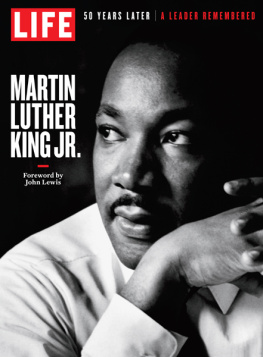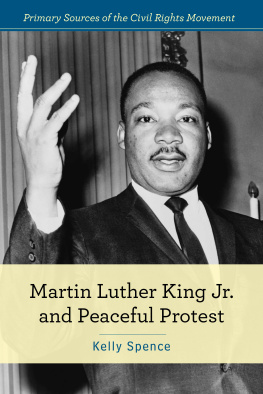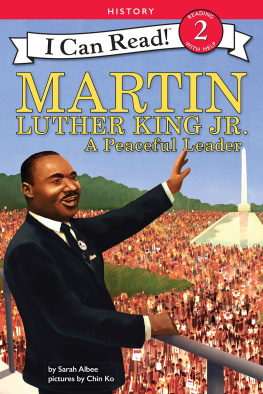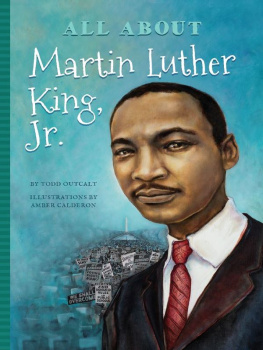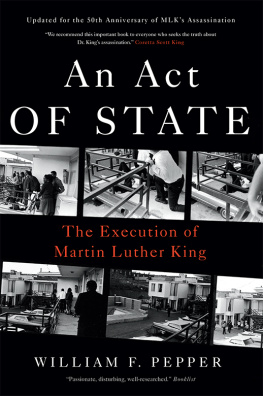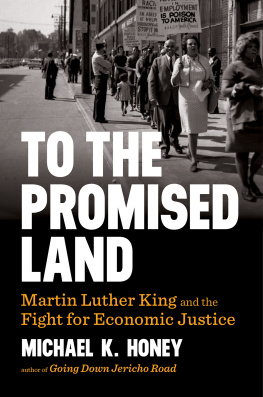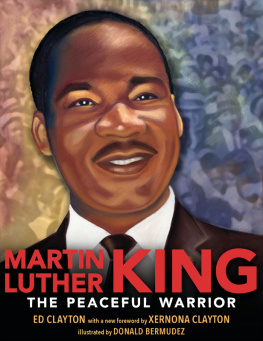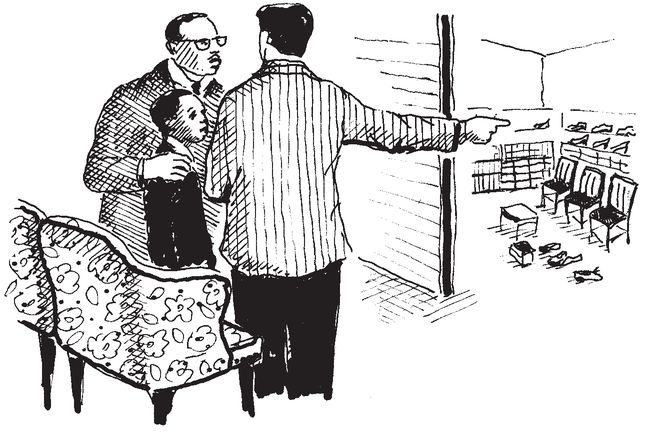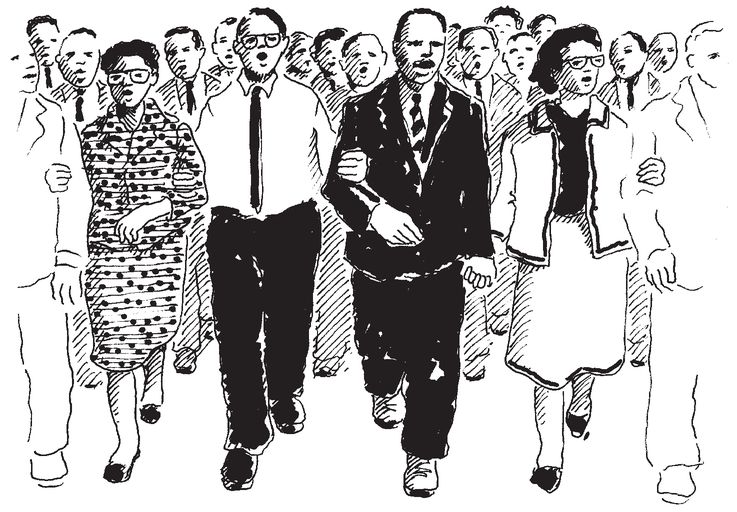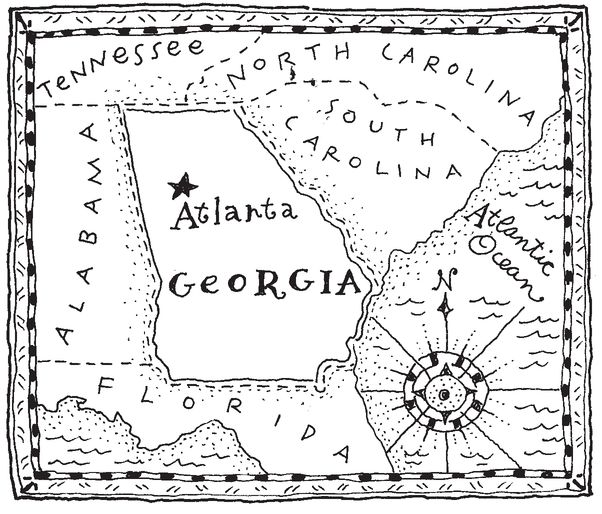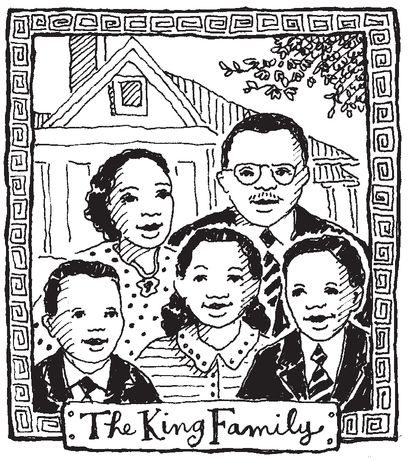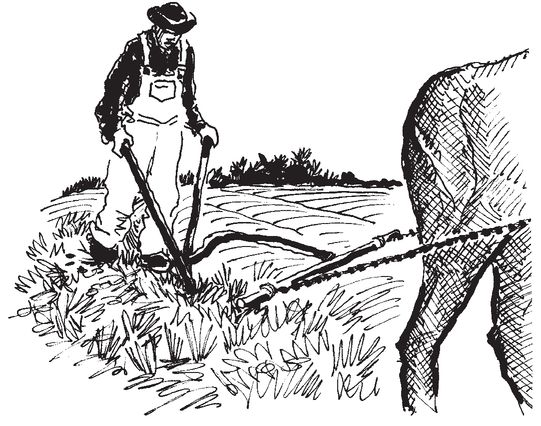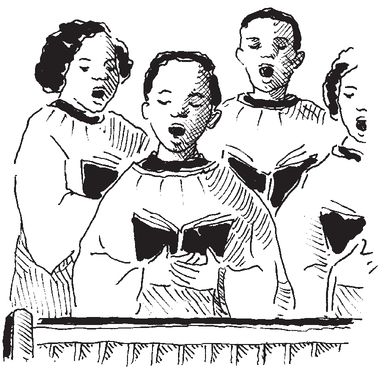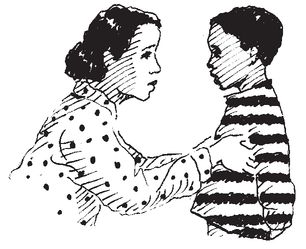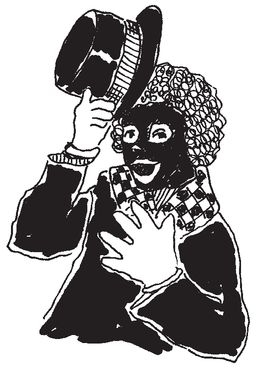Table of Contents
For Sophie and TonyE.W.
Who Was Martin Luther King, Jr.?
Growing up in the South was not easy for Martin Luther King, Jr. He was born in 1929, when black people were treated very differently than white people. One day, Martins father took his young son to buy a pair of shoes. The store was empty. But the white shopkeeper told them that they would have to wait in the back of the store.
Martins father got very angry. Why did they have to sit in the back of the store? If he couldnt buy shoes for his son in the front of the store, he would not buy them at all. He took Martin by the hand and led him out of the store. As they walked down the street, his father said, I dont care how long I have to live with this system, I will never accept it.
The system in the South kept black people apart from white people. It was called segregation. Black children and white children went to separate schools. Black people had to ride at the back of the bus. As he grew up, Martin decided to fight for change. But it was a peaceful fight.
Martin led marches. He banded people together in protests. He made speeches. Many people listened to his words and joined his nonviolent fight. Martin Luther King, Jr., fought using his words, not his fists.
Martin Luther King, Jr., had a dreama dream that all people could live together in peace and be treated equally. And though he died over forty years ago, his dream lives on.
Chapter 1
A Perfect Boy
On January 15, 1929, a baby boy was born in the city of Atlanta, Georgia. The doctors said he was perfect. His parents were so happy. They named him Michael, the same name that his father had. But when little Michael was five, his father decided to change both of their names to Martin. So now, the little boy became Martin Luther King, Jr.
Young Martin had a very happy home life. He had an older sister named Willie Christine. (Everyone called her Chris.) He also had a younger brother named Alfred Daniel. The Kings lived in a large house on Auburn Avenue in Atlanta. Their neighborhood was comfortable. No one was very poor or very rich.
There was a lot of love in Martins family. Martin never remembered his parents arguing. Martins mother, Alberta Williams King, was very soft-spoken and easygoing. Her father was a well-known minister. After high school, she went to college, which was something that not many black women did back then. Alberta had a warm personality, and Martin always found it very easy to talk to her.
Martins father, Martin, Sr., was a large man in many ways. He weighed about 220 pounds and was filled with self-confidence. Martin, Jr., admired his father very much. His fathers family was very poor and lived in a rundown shack. They were sharecroppers. A sharecropper is a farmer who does not own his own land. Instead, he works on another farmers land and gets some of the crops for himself. Martins father worked hard to get his high-school and college diplomas. After college, he became a minister of the Ebenezer Baptist Church in Atlanta.
The Ebenezer Baptist Church was like a second home to Martin. He sang in the church choir. He went to Sunday school and made many friends. It was there that Martin learned to get along with all kinds of peoplekids as well as teachers.
One of Martins good friends was white. The boys had known each other since they were three years old. The boy didnt live near Martin, but his father owned a store across the street from the King home. Martin and the boy were always together. But when they turned six, they started school. Martin went to a school for black children. The boy went to a school for white children. One day the boys father told his son that he could no longer play with Martin. Martin ran home and cried to his mother. It was the end of the friendship.
That night at dinner, the family had a long talk. This was the first time that Martin realized how many white people felt about black people. Even so, his parents told Martin not to hate white people. It was his duty as a Christian to love everyone.
Martins mother told him that he should always keep a sense of somebodynessthat he was importanteven though the outside world was telling him he was not.
As Martin Luther King, Jr., grew up, he became more and more aware of the problems facing black people, especially in the South. Everywhere he looked there were Whites Only signs. Blacks could not go into many hotels, restaurants, and stores. Blacks could not even drink out of the same water fountains as whites. In many cities, blacks had to ride in the back of a bus. If they tried to sit in the front, they were thrown in jail. And if black people wanted to go to a movie theater, they had to sit way up in the balcony. These rules were called Jim Crow laws. And they made Martin very angry.
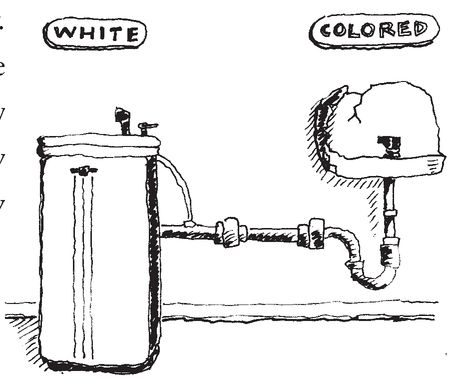
JIM CROW LAWS
THE TERM JIM CROW WAS STARTED AROUND 1830 BY A MINSTREL PERFORMER. MINSTREL PERFORMERS WERE ENTERTAINERS WHO TRAVELED AROUND THE NORTH AND SOUTH PUTTING On SHOWS. THEY WERE MOST POPULAR BEFORE AND AFTER THE U.S. CIVIL WAR.
In ONE SHOW, A WHITE SINGER BLACKENED HIS FACE WITH CHARCOAL TO LOOK LIKE A BLACK PERSON. HE DANCED AROUND In A SILLY WAY THAT MADE FUN OF BLACK PEOPLE. HE SANG A SONG THAT ENDED WITH THE WORDS I JUMP JIM CROW.
SOME PEOPLE THINK THAT THIS CHARACTER WAS BASED On An OLD BLACK SLAVE OWNED BY A MR. CROW. BY THE 1850S, THE JIM CROW CHARACTER SHOWED UP In MANY MINSTREL SHOWS.
BY THE TIME OF THE CIVIL WAR, THE TERM JIM CROW WAS A NEGATIVE WAY OF TALKING ABOUT BLACK PEOPLE. AND BY THE END OF THE 1800S, RACIST LAWS WERE CALLED JIM CROW LAWS.




